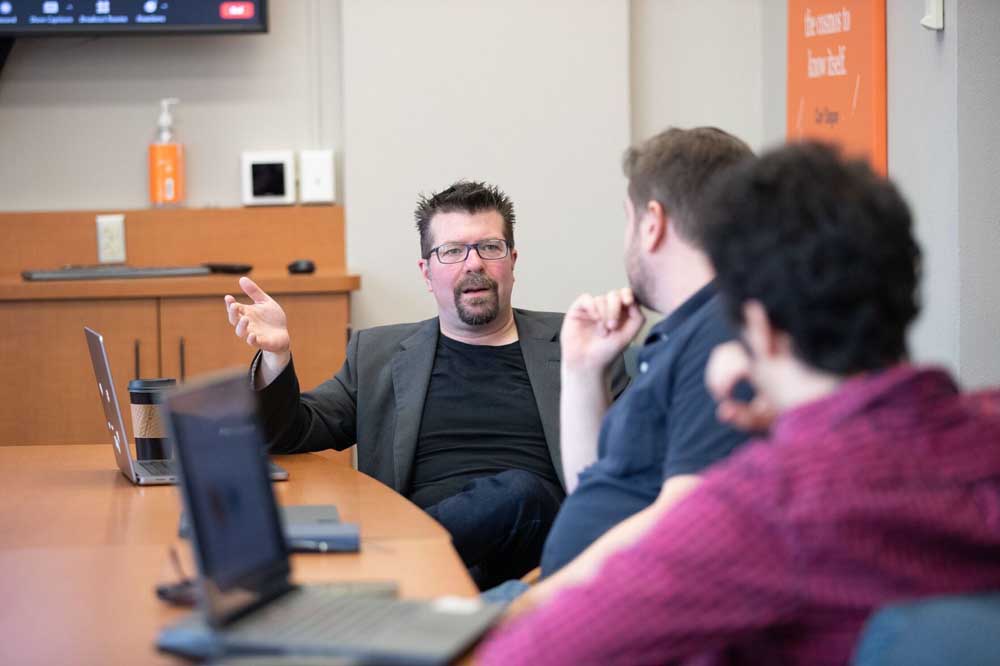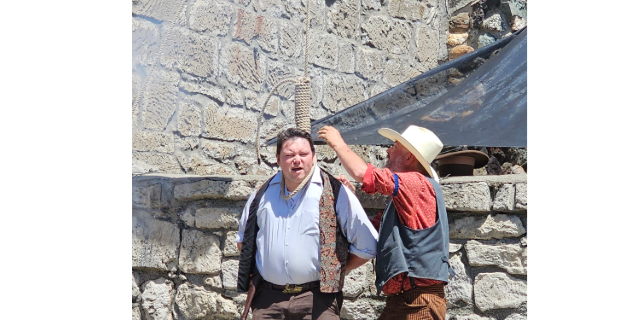Two Bend OSU students participated in groundbreaking gravitational waves research
Published 5:30 am Sunday, July 2, 2023

- Xavier Siemens, physics professor at Oregon State University.
BEND — Two Oregon State University undergraduate students from Bend worked on a multiyear project that released evidence Wednesday, June 28, that gravitational waves are moving through the universe at low frequencies.
Albert Einstein predicted these space-time ripples in 1915.
OSU physics professor Xavier Siemens co-directed the project, joined by astrophysics researchers from the North American Nanohertz Observatory for Gravitational Waves Physics Frontier Center, according to OSU. Their results were published in four articles in The Astrophysical Journal Letters.
Around 20 graduate and undergraduate students from the university, including Magnus L’Argent and Sophia Morton, both from Bend, helped with the project.
“I am really grateful to have even been a part of it. My portion is definitely small, but it was a really amazing opportunity to do research as an undergrad,” said L’Argent, 22, who just graduated from OSU with degrees in physics and mechanical engineering. He recently moved to Canada to attend graduate school at McGill University.
L’Argent was interested in getting involved with research as an undergraduate, and just as the pandemic was beginning, someone told him about the astrophysics research project. He said he became interested in physics primarily because of astrophysics, and joined the team.
Detecting low-frequency gravitational waves
Pulsars, the spinning remains of exploded supernova stars, send out regular pulses of radio waves. A group of pulsars is called a pulsar timing array. Researchers have been using radio pulsar timing to look for gravitational waves for years. The students worked on searching for new pulsars to add to the array using data from the Arecibo Observatory in Puerto Rico and the Green Bank Telescope in West Virginia. The project also used data from the Very Large Array in New Mexico.
“Our lab is basically the galaxy itself, because these pulsars are spread out throughout the Milky Way,” said L’Argent. “Our only way to interact with them is these telescopes by measuring the radio signals that come from them. So my day-to-day, the actual work I was doing, was more so coding or looking at these different plots of radio signals.”
He said looking for a pulsar involved going through plenty of signals that ended up being noise or radio frequency interference.
The 68 pulsars used in the research allowed physicists to begin to see the pattern Einstein predicted in his theory of general relativity more than a century ago. The timing of pulsars, which usually spin consistently like clocks, is changed by gravitational waves moving between the pulsars and Earth.
Researchers have been measuring pulsars for 15 years, and, since they’re so consistent, can estimate when the signals should arrive at Earth. The observed timing differences are a key indicator of low-frequency gravitational waves, said L’Argent.
“The more pulsars we have available, the more accurate the whole system is,” said L’Argent.
Jeffrey Hazboun, an OSU physics professor, told The Bulletin, “More broadly we have opened up an entirely new part of the gravitational wave spectrum and are observing continually. Who knows what surprises the cosmos will reveal to us, now that we are listening.”
Morton, 20, is studying applied physics with a minor in nuclear engineering at OSU.
She has lived in Bend her whole life and writes newsletters for the Oregon Observatory in Sunriver. She started working there as a high school student, operating telescopes and working with patrons.
“We were mostly looking at graphs. The data was taken on site to search for new pulsars,” she said. “It was super cool to be part of the project, and able to make observations and study the universe.”
Morton will continue working on the project in the fall as a senior. Over the summer, she is studying gravitational waves in Pisa, Italy.
“All of our undergraduate students are involved with searching for new pulsars and often take on more technical projects in gravitational wave data analysis for their research theses,” said Hazboun. “This group is led by students, and Phia (Sophia) is currently one of the leads.”
What the research will do
The research will likely now turn to finding other types of gravitational waves. Researchers believe using a pulsar timing array to detect and study gravitational wave signals from merging black holes will lead to further understanding of how the universe works.
“This is kinda honestly the beginning of a whole new subfield of gravitational wave science, which is really cool, and I’m sure in the coming years they’ll find all sorts of interesting things that we never thought would be possible,” said L’Argent.
“These results are really just the beginning of the story. Now that we see this signal from low-frequency gravitational waves, we need to keep taking data and doing more analyses . … The most likely source is super massive black hole pairs, which track the merger history of galaxies and the cosmic structure. More data will allow us to try and understand how very massive black holes formed so early in the history of the Universe.”





